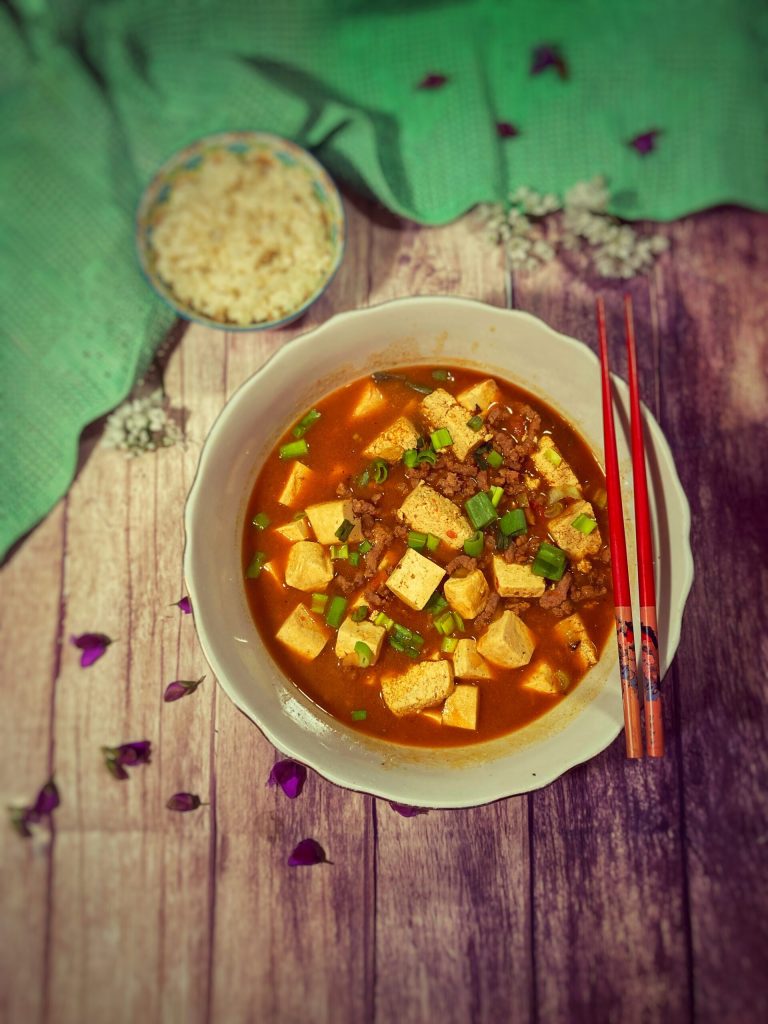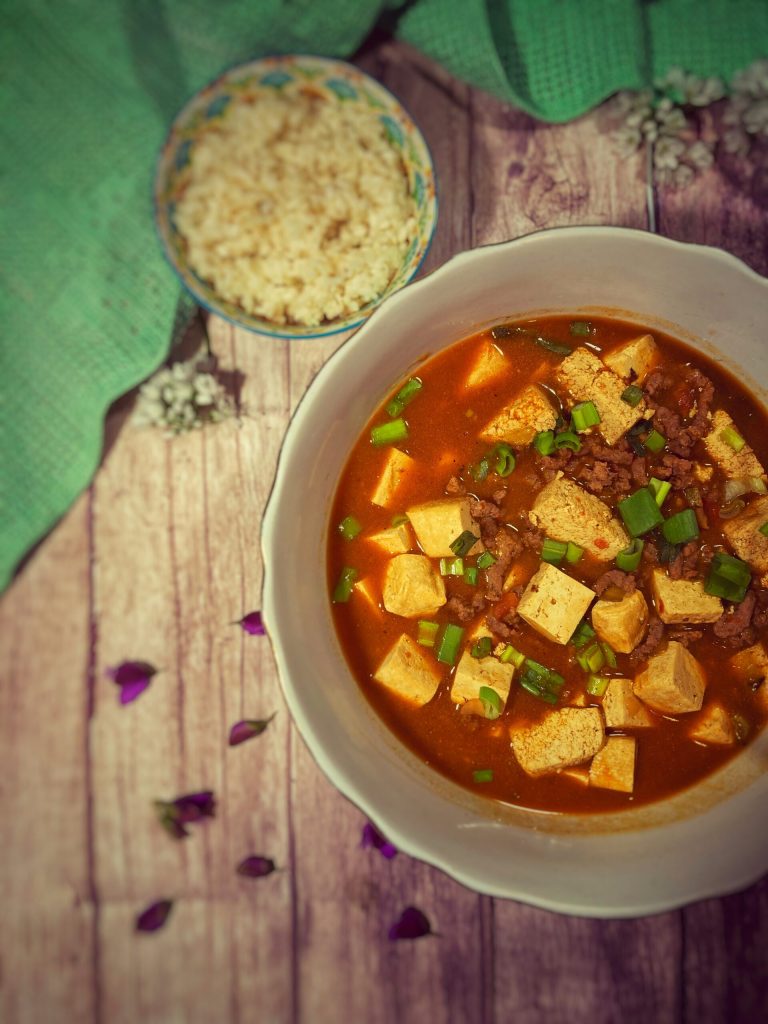Mapo Tofu is one of the most representative dishes of Sichuan cuisine, in the Southwest of China, known for its “spicy” characteristics.
▶The main ingredients are tofu, minced beef (although it has often been replaced by pork in recent years), fermented bean paste called douban* or doubanjiang, and Sichuan pepper.
▶Má (麻) means “mázi” which in Chinese means wrinkle; “Pó (婆)” stands for “pózi” meaning old lady. Hence “Mápó”, the wrinkled face old lady, who was probably the first to prepare this dish.
▶During the Chinese Cultural Revolution, this dish was once renamed “Ma Po Tofu” due to the destruction of the Four Olds (i.e., the social movement of “destroying old ideas, old culture, old customs, and old habits”) and is still called that by some people today.
▶The Japanese-style mapo tofu mainly does not use whole peppercorns (or only a small amount), but uses oyster sauce, Shaoxing wine, and some even use sweet beans or Hatcho miso as sauce.
There is a poem describing this Qing Dynasty dish: “Mapo tofu is still famous and tofu is tastier when cooked. The shadow of the curtain by the Wanfu bridge is moving, and Mr. Heguchun is drunk.”
Another dish with tofu:

- Difficulty: Easy
- Cost: Economical
- Preparation time: 5 Minutes
- Portions: 4 people
- Cooking methods: Boiling
- Cuisine: Chinese
- Seasonality: All seasons
Ingredients
- 2 blocks tofu (preferably silken tofu)
- 7 oz ground beef
- 4 cloves garlic
- to taste fresh ginger
- 2 teaspoons Sichuan peppercorns
- 3 tablespoons doubanjiang sauce
- to taste sesame oil
- 2 scallions
- 2 cups meat or vegetable broth (or hot water)
- 2 teaspoons rice wine
- 2 teaspoons soy sauce
- 1/4 teaspoon sugar
- 2 tablespoons cornstarch
Steps
Chop the garlic with ginger.
Toast the Sichuan pepper and grind it to powder.
Add the chopped garlic and ginger to a pan with sesame oil, then the meat. Cook for 3 minutes.
Add the chopped scallions, the douban sauce, and the rice wine. Then the broth (or water), soy sauce, sugar, and finally the tofu cut into cubes.
Mix the cornstarch with 60 ml of water and add to the mixture along with the pepper.
Cook for about 15 minutes.
Serve garnished with the green part of the scallions.

*Doubanjiang
Pixian Dou Ban is a PGI brand: a salted Chinese bean, a paste made of fermented beans or broad beans, chili, soybeans, salt, and flour.
Doubanjiang is typically used in Sichuan cuisine and has been called “the soul of Sichuan cooking.” Sichuan dishes like mapo tofu and huoguo (Sichuan hotpot) all use doubanjiang as a key ingredient.
Other regions have their own versions: in regions like Guangdong or Taiwan, Sichuan doubanjiang is called la-doubanjiang (Chinese: 辣 豆瓣醬, “la” (辣) meaning ‘hot’ or ‘spicy’) to distinguish it from local non-spicy versions.
The most famous variety of doubanjiang is probably Pixian doubanjiang (Chinese: 郫县 豆瓣酱; pinyin: Píxiàn dòubànjiàng), named after Pixian. It is a product with a long fermentation period in sunlight (often more than 3 years).
Pixian doubanjiang has a reddish-brown color with a deep and complex umami profile.
The standard way to use it is to fry it first in oil before adding other ingredients, infusing the oil with its color and aroma.
Well-known brands of pixian doubanjiang commonly available in Asian grocery stores outside of China include: Juan-cheng, Chuan lao hui, and Dandan.
The ingredients must include Erjingtiao chili, originating from Pixian and surrounding districts in Eastern Sichuan.
Fava or beans from Eastern Sichuan or the neighboring province of Yunnan.
Water from the underground of Pixian.

